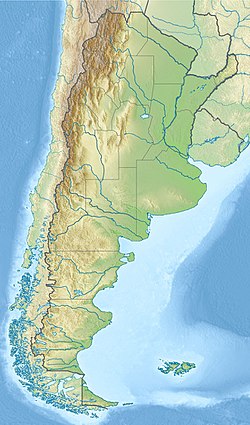| Lecho Formation | |
|---|---|
| Stratigraphic range: Early Maastrichtian ~ | |
| Type | Geological formation |
| Unit of | Salta Group |
| Underlies | Yacoraite Formation |
| Overlies | Los Blanquitos Formation |
| Lithology | |
| Primary | Sandstone |
| Location | |
| Coordinates | 26°06′S65°24′W / 26.1°S 65.4°W |
| Approximate paleocoordinates | 28°36′S52°00′W / 28.6°S 52.0°W |
| Region | Jujuy, Salta |
| Country | Argentina |
| Extent | Salta Basin |
The Lecho Formation is a geological formation in the Salta Basin of the provinces Jujuy and Salta of northwestern Argentina. Its strata date back to the Early Maastrichtian, and is a unit of the Salta Group. The fine-grained bioturbated sandstones of the formation were deposited in a fluvial to lacustrine coastal plain environment.
Contents
Dinosaur remains are among the fossils that have been recovered from the formation. [1]
According to Frankfurt and Chiappe (1999), the Lecho Formation is composed of reddish sandstones. The Lecho is part of the Upper/Late Cretaceous Balbuena Subgroup (Salta Group), which is a near-border stratigraphic unit of the Andean sedimentary basin. Fossils from this formation include the titanosaur Saltasaurus along with a variety of avian and non-avian theropods.




